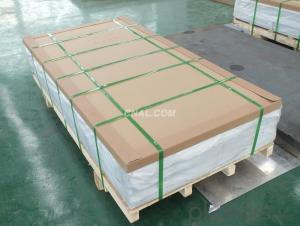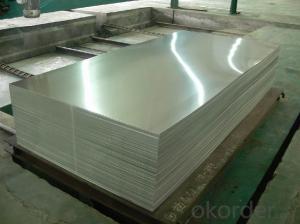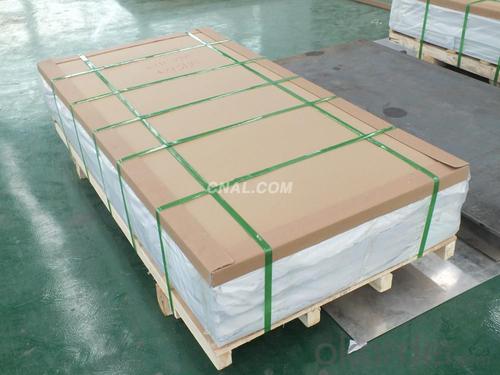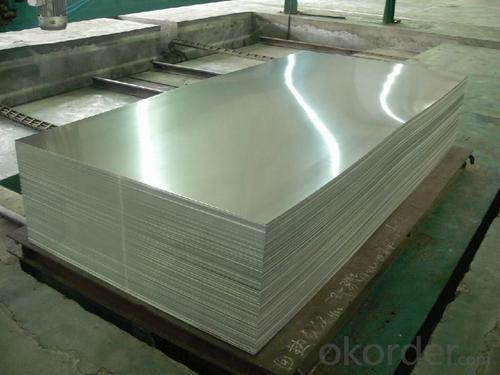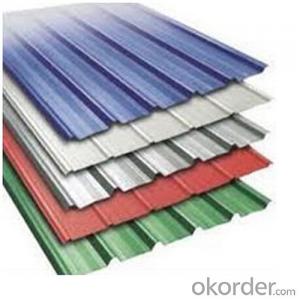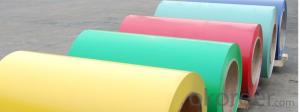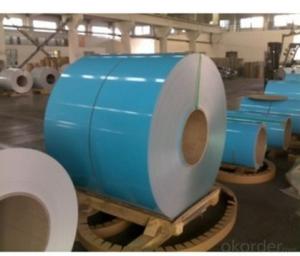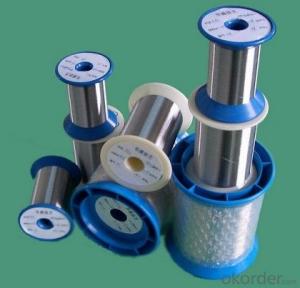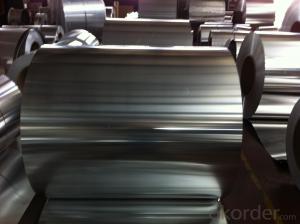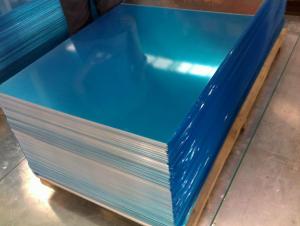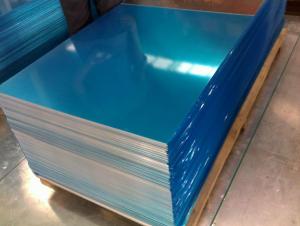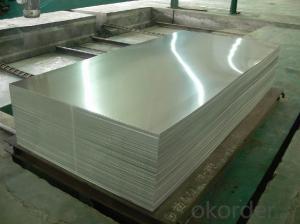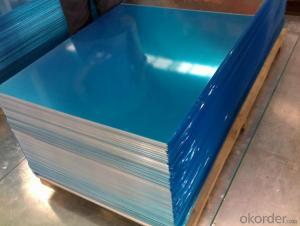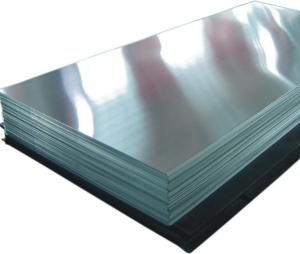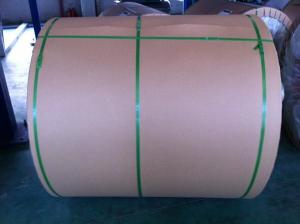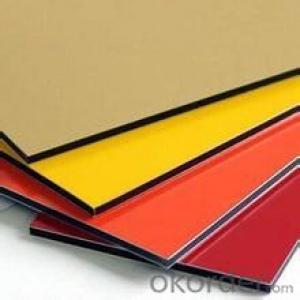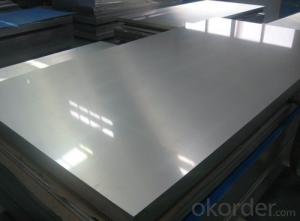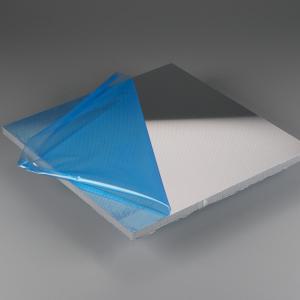Anodized AA8XXX Mill Finished Aluminum Sheets for Construction
- Loading Port:
- Shanghai
- Payment Terms:
- TT OR LC
- Min Order Qty:
- 5 m.t.
- Supply Capability:
- 10000 m.t./month
OKorder Service Pledge
OKorder Financial Service
You Might Also Like
Specification
1.Structure of AA8xxx Mill Finished Aluminum Sheets Used for Construction Description
AA8xxx Mill Finished Aluminum Sheets Used for Construction is one semi-finished aluminium material. This strip can be rolled down to aluminium coil,sheet,circle ect. The alloy AA8xxx is widly used in building, industry ect. Its weight is much lower than steel. So many customers choosed aluminium material instead of steel.
2.Main Features of AA8xxx Mill Finished Aluminum Sheets Used for Construction
1)Excellent weather-proof durability
2)Anti-ultraviolet
3)High erosion resistance
4)Stable color and gloss
5)Good mechanical processing performance
6)Abrasion resistance
7)Anti-impact
3.AA8xxx Mill Finished Aluminum Sheets Used for Construction Images
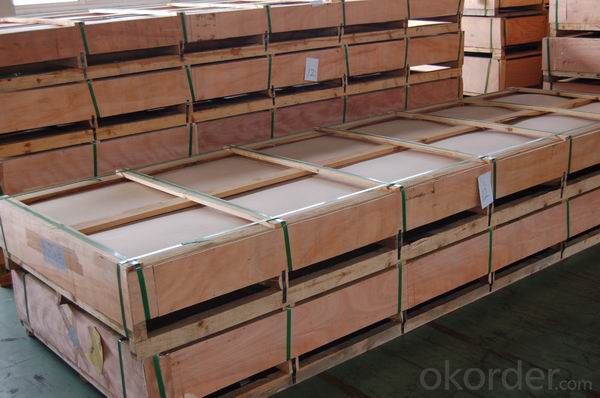
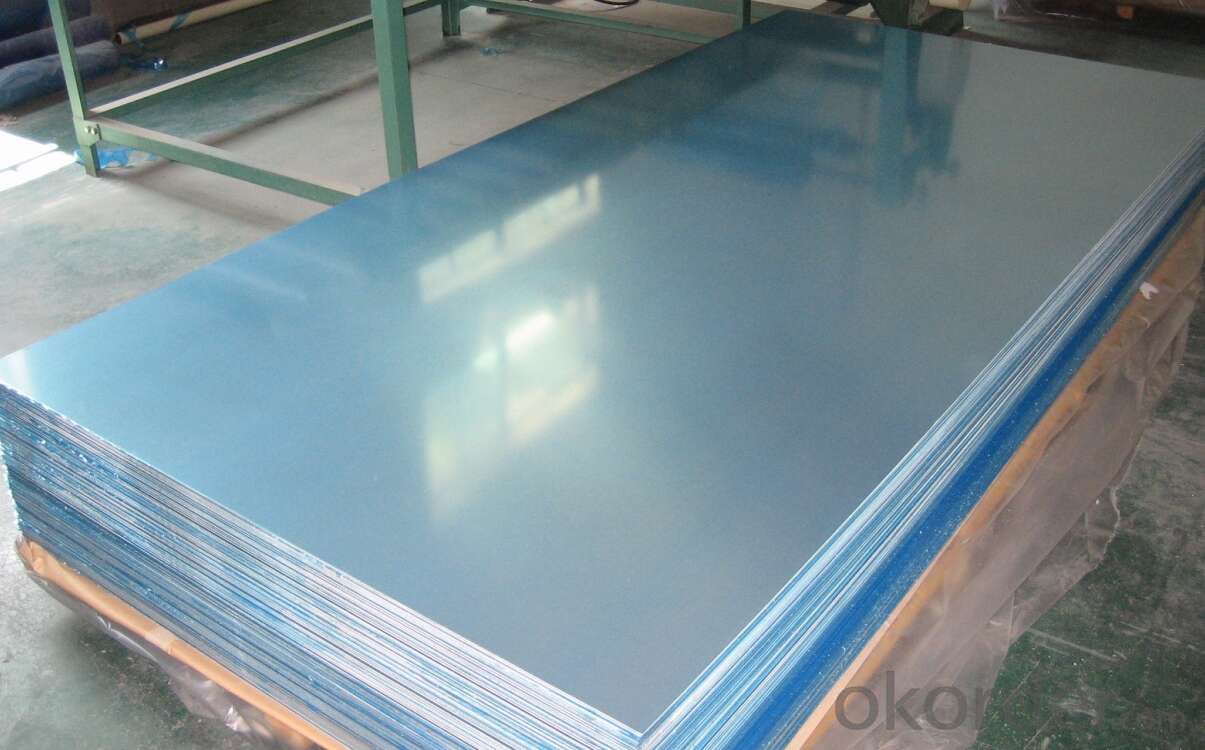
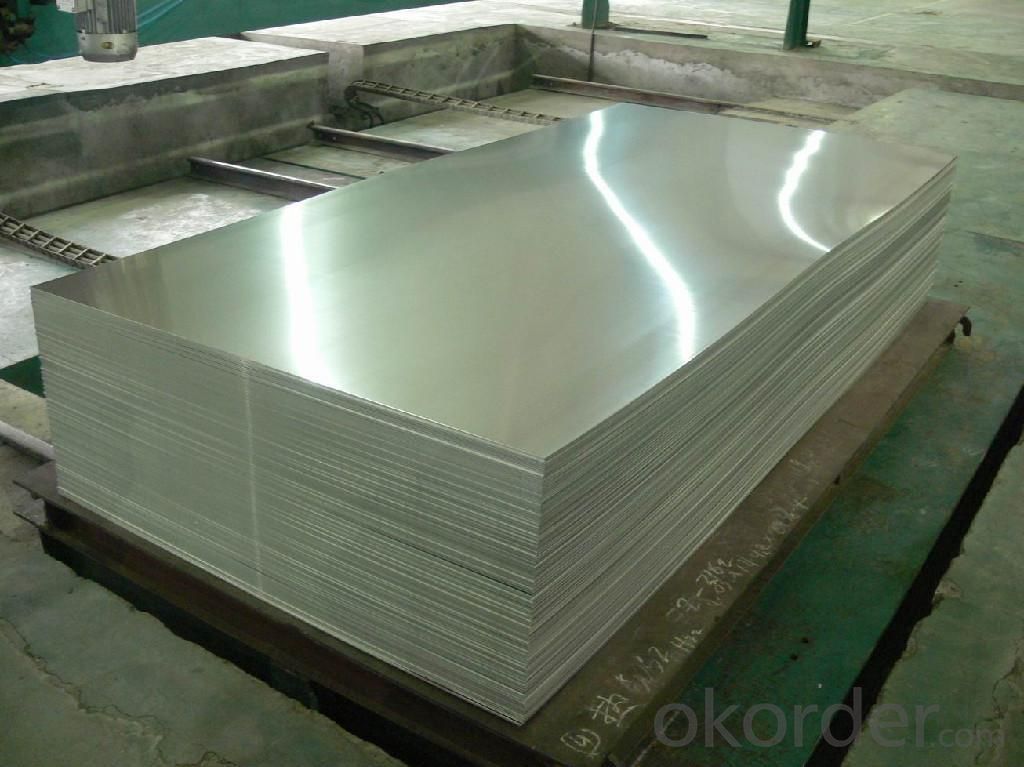
4.AA8xxx Mill Finished Aluminum Sheets Used for Construction Specification
Alloy | AA8xxx |
Temper | H14, H16, H18, H22, H24, H26, H32, O/F |
Thickness | 0.2mm -- 100mm |
Width | 30mm -- 1700mm |
Standard | GB/T 3880-2006,EN,ASTM,JIS |
What is the quality standard?
---Usually our standard is GB3880-2006
What is the largest width?
---It is 2300mm
What is the MOQ?
---Usually we can accept 80 tons.
- Q: This question asks about the various types of paint that can be used specifically for aluminum sheets, indicating an interest in paint compatibility and options for this particular material.
- <p>There are several types of paints suitable for aluminum sheets, each offering unique properties. These include: 1. Acrylic Paints - Water-based, easy to apply, and offer good adhesion. 2. Epoxy Paints - Known for their durability and chemical resistance, they provide a strong bond to the metal. 3. Enamel Paints - Provide a hard, glossy finish and are resistant to chipping and scratching. 4. Polyester Paints - Offer excellent durability and UV resistance, making them suitable for exterior applications. 5. Powder Coatings - Applied electrostatically, they provide a tough, scratch-resistant finish. 6. Specialty Paints - Such as heat-resistant or anti-corrosive paints, designed for specific industrial applications. The choice of paint depends on the application, desired finish, and environmental conditions.</p>
- Q: I get to do an aluminum blank for a fence and I am curious whether I can put slots in it with the router?I am not sure how thick it is, may say 3/16's.
- Yes you can use a router on aluminium. Use some kind of a fence, a piece of angle iron or a block of hardwood. Use a new bit, an old dull one will cause you problems. Pre-drill smaller holes than the slot width at each end of the slot. Stay back away from the end of the slot about 1/32 of an inch. Make several passes, at a depth of about 1/16 of an inch, per pass. If you can, make the slot with a bit smaller than the finished slot width. Use a 3/16 bit for a 1/4 inch slot. Use a 5/16 bit for a 3/8 inch slot. This will give cleaner slot edges and allow you to accurately make the slot width that you want. You can do this dry, but a little WD-40 oil will give even cleaner slot edges. Also climb mill the last pass on each slot edge to give a better/ smother edge. Climb Milling is pushing the router backwards of the way you normally travel in wood. Ben
- Q: Are 101 aluminum sheets suitable for interior design or architectural applications?
- Yes, 101 aluminum sheets are suitable for interior design or architectural applications. 101 aluminum is a common alloy that offers good strength, corrosion resistance, and excellent formability. It can be easily cut, shaped, and fabricated to create various architectural elements such as wall panels, ceilings, furniture, and decorative accents. Additionally, 101 aluminum sheets can be finished with different coatings or textures to enhance their visual appeal and durability. Overall, 101 aluminum sheets are a versatile and cost-effective choice for interior design and architectural applications.
- Q: Is it possible to use aluminum sheets as a material for the exterior walls of residential buildings?
- <p>Yes, aluminum sheets can be used for exterior walls in residential buildings. They offer several advantages such as durability, resistance to weather and corrosion, and low maintenance. Aluminum is lightweight, which can reduce structural load, and it can be easily shaped and installed. Additionally, it has good thermal performance and can be combined with insulation for energy efficiency. However, it's important to consider the aesthetic appeal, as aluminum may not match the traditional look of some residential buildings, and ensure it meets local building codes and standards.</p>
- Q: Can aluminum sheets be used for cryogenic applications?
- Yes, aluminum sheets can be used for cryogenic applications. Aluminum has good thermal conductivity and low density, which makes it suitable for cryogenic environments. It can withstand extremely low temperatures without becoming brittle or losing its mechanical properties. Additionally, aluminum is non-magnetic and has excellent resistance to corrosion, which is important in cryogenic applications. However, it is worth noting that the specific alloy and thickness of the aluminum sheet should be carefully selected based on the specific cryogenic temperature and application to ensure optimal performance.
- Q: This question asks for the current market price of aluminum sheets.
- <p>The price of aluminum sheets in the market can vary significantly based on factors such as grade, thickness, quantity, and market demand. As of my last update, the price per ton of aluminum was fluctuating around $2,000 to $3,000 USD, but this is subject to change. For the most accurate and up-to-date pricing, it's best to check with suppliers or commodity exchanges, as prices can shift daily due to global economic conditions and supply chain dynamics.</p>
- Q: some car manufactures use aluminium car body on a steel sub-frame. explain, using electrode potential what would happen if a weak acid was to become trapped in the space between these two metals!! any current plzz help, its for my assignment, and i dont understand
- Chemistry is all about how atoms exchange electrons. Some kinds like electrons better than others, and this is the basis of electrochemistry and Redox reactions. It all starts with the acid: HAcid - H(+) + Acid(-) The important thing is the H(+) ion, which is positive because it is a Hydrogen atom which has lost an electron. This leaves it with a positive charge, since it is nothing but a positive proton at this point. Fe + 2H(+) - Fe(+2) + H2 The above is a typical reaction between an acid and most metals. The H(+) ions strip an electron from the metal to form a metal ion and Hydrogen gas. What has happened is the Hydrogen ions have oxidized the Iron. The Iron in turn has reducted the Hydrogen. In terms of electrochemistry, there are two half reactions going on simutaneously. First, the Iron atoms generate two negative electrons: Fe - Fe(+2) + 2e(-) = OXIDATION OF IRON Then the Hydrogen ions combine with the electrons to form Hydrogen gas: 2H(+) + 2e(-) - H2 = REDUCTION OF HYDROGEN Note that in both reactions, the charges are equal on either side of the reaction. The next part of this process happens when the Iron ions come into contact with the Aluminum metal: 3Fe(+2) + 2Al - 2Al(+3) + 3Fe Note the Iron ions are recting exactly the same way the Hydrogen ions did. In other words, they are oxidizing the Aluminum. The Aluminum is now reducing the Iron. The net result of this is that the acid rusts the Iron and then the Iron rusts the Aluminum. The end result is the production of tiny amounts of Hydrogen gas, The Iron being displaced from where it had initially been, and the solid Aluminum discintegrating into some form of Aluminum salt. Calculations involve something called an electrochemical series and the voltage is given using the Nerst equation. Both the electrochemical table and the equation can be found in any chemistry textbook.
- Q: What are the different methods for punching aluminum sheets?
- There are several different methods for punching aluminum sheets, each with its own advantages and applications. Some of the common methods include: 1. Manual Punching: This method involves using hand-operated tools such as handheld punches or hole punches to manually create holes or shapes in the aluminum sheet. It is suitable for small-scale or low-volume production and provides flexibility in terms of hole size and shape. 2. Mechanical Punching: Mechanical punching involves the use of a mechanical press machine equipped with a punch and die set. The sheet is fed into the machine, and the punch is driven through the material, creating holes or shapes. This method is faster and more efficient than manual punching and is suitable for medium to high-volume production. 3. CNC Punching: Computer Numerical Control (CNC) punching utilizes automated machinery that is programmed to punch holes or shapes based on a digital design. The aluminum sheet is loaded onto the machine, and the CNC controls the movement of the punch and die to create precise and complex patterns. CNC punching offers high accuracy, repeatability, and speed, making it ideal for high-volume production and intricate designs. 4. Laser Punching: Laser punching combines the use of a laser cutter and a mechanical punch to create holes or shapes in aluminum sheets. The laser beam vaporizes or melts the material, while the punch pushes the cut part out of the sheet. This method offers high precision, versatility, and the ability to cut complex shapes quickly. However, it is typically more expensive and time-consuming compared to other methods. 5. Notching: Notching is a method used to create V-shaped or U-shaped cuts in aluminum sheets. It is often used for joining or folding the material to form corners or edges. Notching can be done manually or with the help of a mechanical notching machine. The choice of punching method depends on various factors such as the desired hole size and shape, production volume, precision requirements, complexity of design, and budget. It is essential to consider these factors and consult with experts to determine the most suitable method for punching aluminum sheets based on specific needs and applications.
- Q: What are the common thicknesses of aluminum sheets used in aerospace applications?
- Aluminum sheets are commonly utilized in aerospace applications because of their lightweight and high strength properties. The thickness of these sheets can vary based on the specific needs of the fabricated component or structure. Aluminum sheets in aerospace applications typically have thicknesses ranging from 0.016 inches (0.4 mm) to 0.25 inches (6.35 mm). These thicknesses are chosen considering factors such as the desired strength-to-weight ratio, structural integrity, and the specific application or component being manufactured. Thinner aluminum sheets, with a thickness of 0.016 to 0.040 inches, are frequently used for lightweight structures, interior components, and non-critical parts. These thin sheets provide the necessary strength while keeping weight at a minimum. Thicker aluminum sheets are employed for more structural components. Typically, thicknesses between 0.040 and 0.125 inches are utilized for structural elements like floor panels, bulkheads, and wing ribs. These sheets offer enhanced strength and rigidity to support the aircraft's weight and handle the stresses experienced during flight. In certain cases, even thicker aluminum sheets ranging from 0.125 to 0.25 inches may be employed for heavy-duty structural components or areas requiring additional strength. These thicker sheets are used for critical parts like landing gear components, wing spars, and engine mounts to ensure the necessary structural integrity and load-bearing capability. It is important to note that these thickness ranges are general and may vary depending on the aircraft type, design specifications, and the specific application within the aerospace industry.
- Q: Are aluminum sheets suitable for signage applications?
- Yes, aluminum sheets are highly suitable for signage applications due to their durability, lightweight nature, and ability to withstand various weather conditions. They are also easy to customize, making them a popular choice for both indoor and outdoor signage.
Send your message to us
Anodized AA8XXX Mill Finished Aluminum Sheets for Construction
- Loading Port:
- Shanghai
- Payment Terms:
- TT OR LC
- Min Order Qty:
- 5 m.t.
- Supply Capability:
- 10000 m.t./month
OKorder Service Pledge
OKorder Financial Service
Similar products
Hot products
Hot Searches
Related keywords
